Media | Articles
BMW’s First 3 Series (E21) Is Quietly Climbing
By the time my friend Tom got his driver’s license, the odometer on his dad’s 1980 BMW 320i was inching toward 200,000 miles. The Polaris Silver paint had long since lost its sheen, and the interior’s Pacific Blue cloth was worn through in some places and showing threads in others. But boy, was it fun. Bessie, as Tom called the old hand-me-down Bimmer, introduced us to the joys of momentum driving found only in a light, sporty, underpowered platform.
Bessie was a first-generation 3 Series—an E21 in BMW chassis-speak. Outshone by the sporting 2002 before it and the massively popular E30-generation 3 Series that followed, the E21 nevertheless deserves credit for helping take BMW’s sporty identity more mainstream in the U.S. market. Today, it doesn’t get the wide adulation that its siblings do but has nonetheless increased in value steadily over the last several years.
To a couple of teenagers, though, what Bessie and her fellow E21s meant for automotive history was about as exciting as Mrs. Fisher’s algebra exam. This tired 320i mattered to us because it got us out. Off campus, out of Northern Virginia’s suburbs, onto blacktop coursing along the Potomac River, past Round Hill’s apple orchards, and lost in the rolling hills near West Virginia.
Imperfect but endearing, Tom’s BMW navigated our escape roads more precisely than a car this age had any right to. The 101-horsepower, 1.8-liter four (the 320 started with a two-liter four in the U.S. in 1977 but switched to the smaller engine for ’80-’83) took a while to get the car up to speed, but once there, the chassis’ composure made carrying pace a breeze. The 320i had plenty of body roll but almost always hung on. Almost. The semi-trailing arm rear suspension could make the car a little bit of a handful at—and over—the limit, especially in the hands of ham-fisted young adventurers.
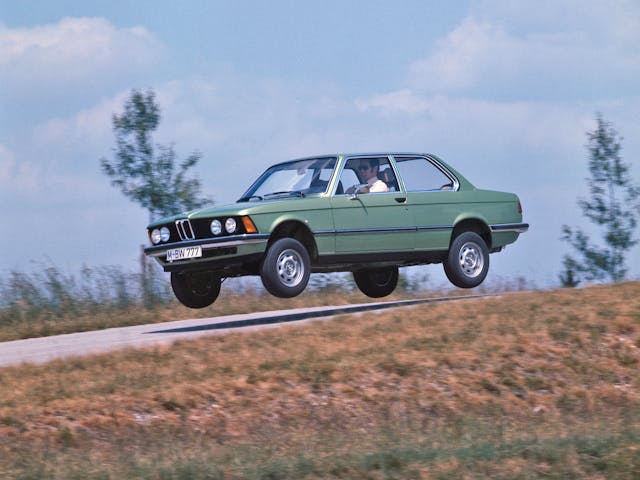
Period road tests lauded the 320’s engaging nature, with Car and Driver’s Rich Ceppos asserting in 1980 that “[t]he 320i is at its best on semi-deserted country two-lane, hammering along just short of its limits. All the controls are direct, linear, and full of feedback. The steering is light and accurate. The brakes are sure.” Ceppos also noted, and I remember, a silky shifter that moved between the five-speed manual’s gears with easy “fingertip flicks.” A willing partner, then, for enthusiastic driving.
Marketplace
Buy and sell classics with confidence
Inside, BMW blessed the diminutive 320 with utilitarian simplicity, using attractive but not luxurious materials atop a clean, driver-focused layout. The gauges and switchgear will be familiar to anyone who has spent time in an E30. Peer around and the cockpit feels small but not cramped, thanks in large part to spindly thin pillars and ample glass all around. If Tom’s car had the available air conditioning, I don’t think we ever used it—the hand-crank sunroof and open windows were plenty in the warm months, and the heater’s perfectly aimed footwell vents kept us toasty when it got cold.
The 320i’s exterior is where the lineage to the 2002 is most clear, though there’s also some visible connection to its larger brother, the 5 Series. It’s not sexy like an Alfa GTV, but there’s a cleanliness to Paul Bracq’s E21 design that speaks to the car’s sporting intent without resorting to gimmickry.
The E21 didn’t sacrifice utility for capability, either. There was plenty of trunk space, and the back seat could accommodate a couple more friends, though not necessarily for longer trips. Fuel economy was pretty good, too, at about 25 mpg on the highway.
As a first car, it more than got the job done—it gave a glimpse of driving pleasure in its simplest form.
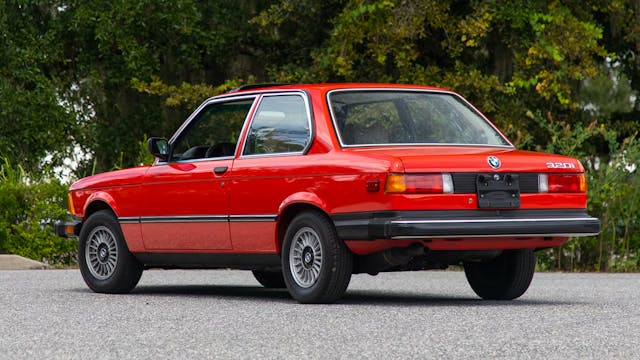
Aside from the other 320i in our high school parking lot, a beautiful Brazil Brown example wearing alloy wheels, we didn’t notice a whole lot of E21s left in our area (and this was in 1996). That’s saying something, since Washington, D.C. and the mid-Atlantic region teemed with these cars on their debut. About 186,000 E21s made it to the U.S. and largely sold to young, affluent buyers attracted to the brand’s recently released Ultimate Driving Machine slogan. While the 320 helped endear BMW to a broader base of buyers than the enthusiast-oriented 2002, as it aged, the E21 never seemed to gain the fervent following that its predecessor enjoyed. The younger E30, which went from cheap and plentiful used car to track car darling to emerging classic, has likewise always seemed to have a leg up on the E21.
Why is the middle child less appreciated? Most critics point to a little too much weight relative to the 2002 and not quite enough power compared to both the 2002 and the E30. Emissions regulations limited BMW’s engine offerings in the U.S., and the E21’s evolution to a slightly softer, more civilized approach compared to the 2002 turned off die-hards.
That said, the 320i has been quietly picking up steam as a collector BMW. Back in 2019, we noted that E21s were on the rise, up 23 percent from the prior year. Maybe we should have picked it for that year’s Bull Market List because since then, #2 (Excellent) condition examples gained 161 percent, to $21,214. Values have come down a bit from the 2022 peak, but the E21 320i has appreciated faster than the 1989-91 325i 2-door sedan (up 87 percent) and the 1968-76 2002 base model (up 103 percent) over the last five years. It is, however, still a lot cheaper than the other two and remains nearly half the value of the 2002.
The in-between syndrome from which the E21 suffers is also evident in our demographic data. The average age for people who seek quotes on them is eight percent younger than the overall market—healthy, but not enough to suggest a continued surge in value. Also, quote volume growth since 2021 has been slow. Compare that to the E30, which has stronger interest among millennials by ten percentage points. The 2002’s demographics aren’t as youthful as the E21, but more people overall are reaching out for quotes.
True, the model doesn’t have the passionate following of the 2002, and BMW didn’t offer a six-cylinder E21 in the States as it did with the E30, but a 320i remains an accessible entry point for those aspiring to classic BMW ownership. Tom’s dad knew what he was doing when he handed his son the keys to Bessie.
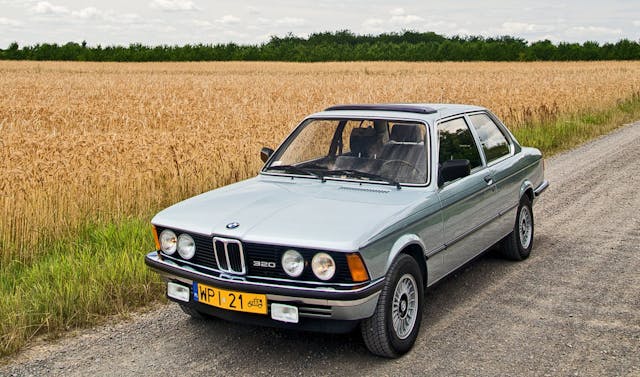
***
Check out the Hagerty Media homepage so you don’t miss a single story, or better yet, bookmark it. To get our best stories delivered right to your inbox, subscribe to our newsletters.
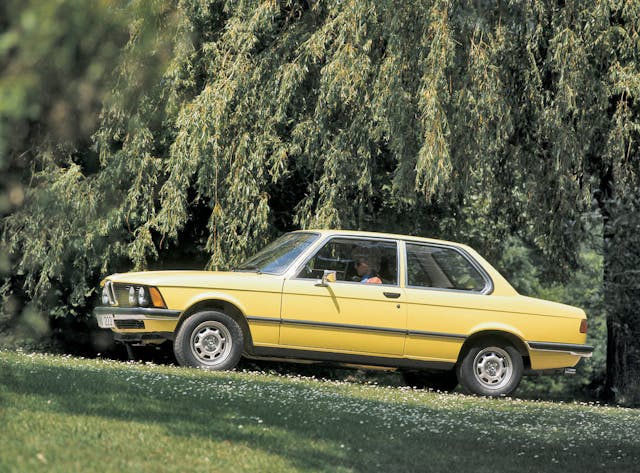








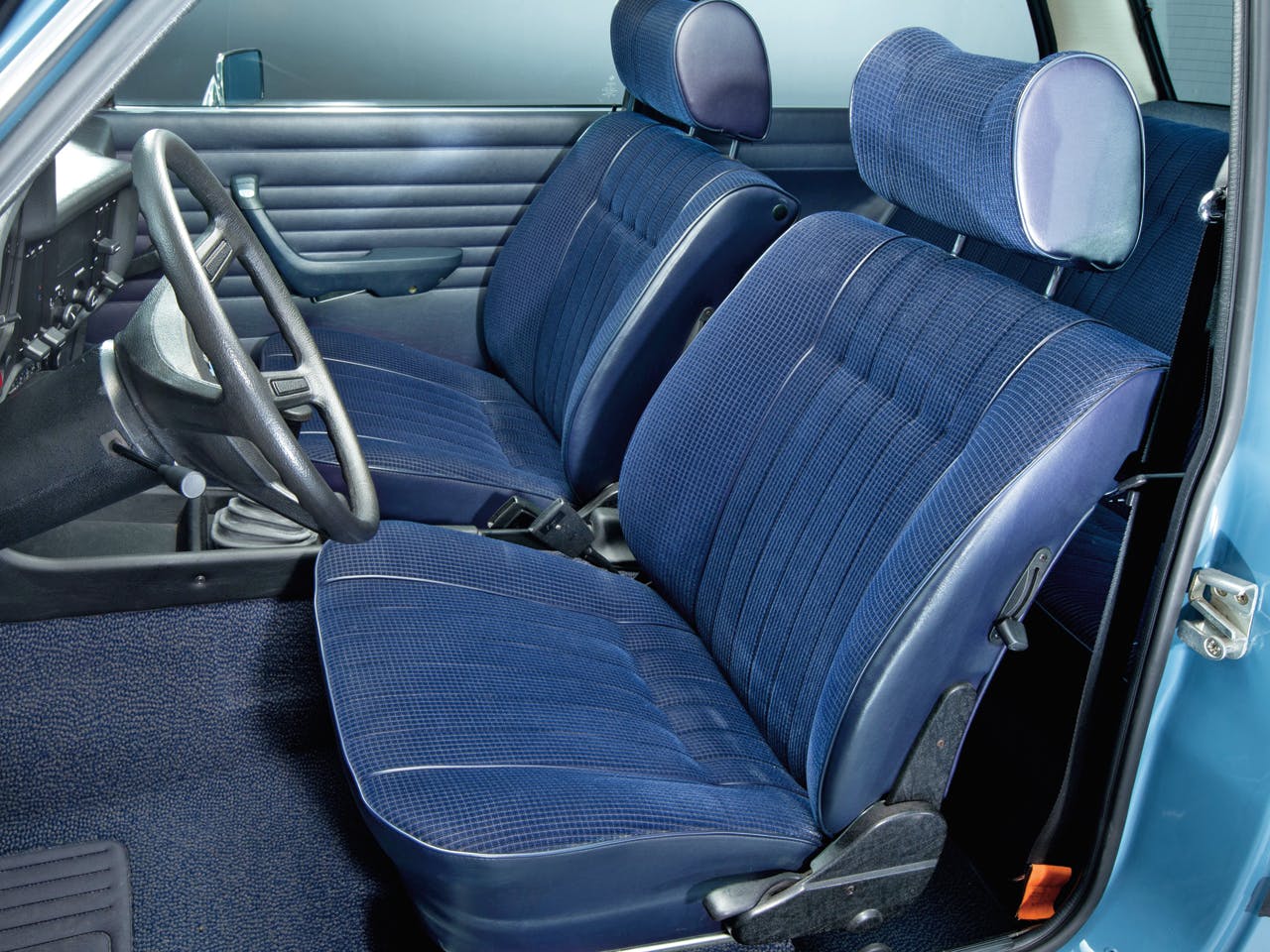
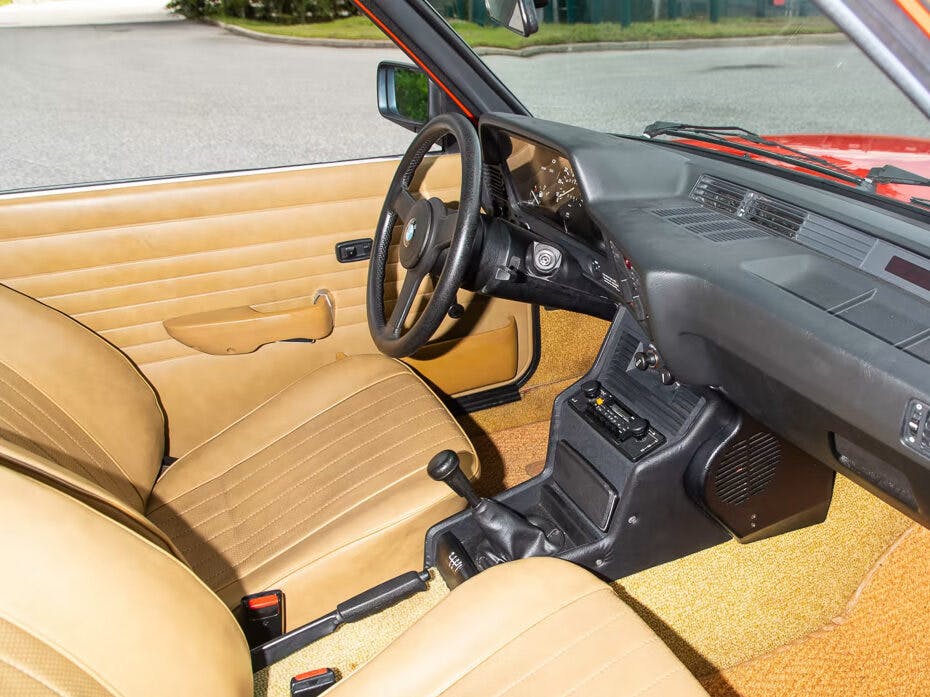




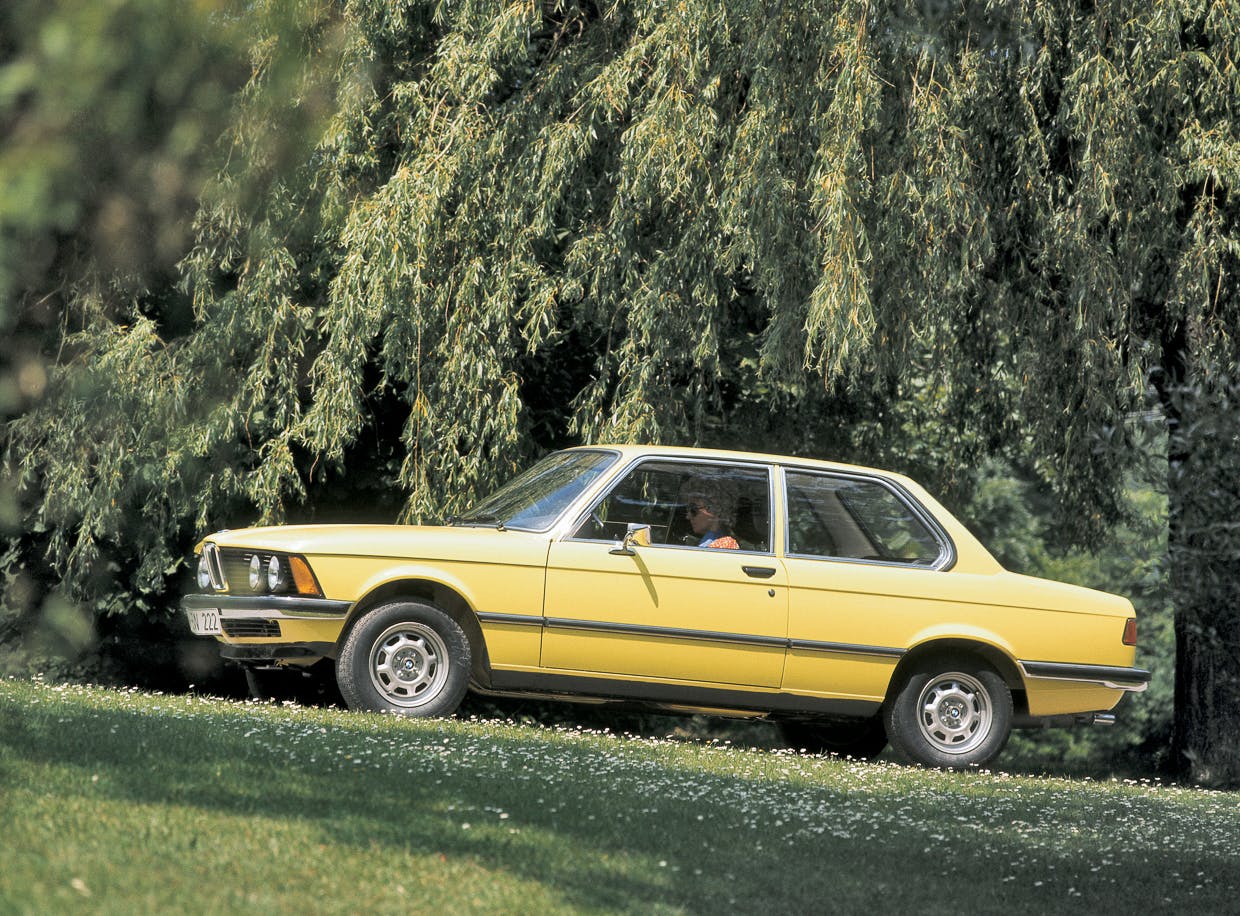
My 82 323i was the German GTO. It had an ETA[2.7] bottom end with a Schrick camshaft to rebuild the engine when the Cylinder head cracked. It was Henna Red [orange],with the bumpers painted to match.15 inch W King Wheels. It was great at BMW driving school events, and taught me a lot. I sold it to a fellow who moved back to Hawaii, and it rusted away there over the years. We talked the day they crushed it, and I will always miss it
I had a buddy in high school, in Germany in the late 80’s, that had a 323i – it was a rocket compared to my ’79 Saab 900. His was army green; I was a bit green with envy! That car was so light and tossable, with a nice power band; it in no way resembles the pudgy 3-series of today.
My ’77 320i was a joy to drive and maintain. After owning a 1502 for some years, this was a considerable improvement. While sporty, it was a great commuter car across Florida each week for work. My next purchase was an E12 528i. It too, was a great car which gave me 435,000 miles before the “tin worm” got it. These early BMW’s taught me to stick with the brand until the late 20teens. Now they focus on “luxury” instead of “engineering”; too many fancy options that aren’t needed to be a drivers car. My current daily is a E39 530i Sport. No more new BMW’s for me…
I owned a blue 1978 320i for a week. Because it was bought after my 1978 turbine-smooth madeira and tan leather 530i, I did not appreciate it as much as I do now. At the time, BMW was communicating an engineer’s appreciation for transportation appliances, and the orange dash illumination and yellow Bosch foglights and the solid reliability all made perfect sense. Now, BMW is lost. Frou-frou geewhiz bs, perceptual ergonomics be da*ned, techno-toy bloated excess.
The same can now be said of their motorcycles. The cars guys have infected Motorrad and as a lifelong Beemer guy, having owned 6 of them and having worked at two different BMW shops, it breaks my heart….
Allan:
I agree with everything that you wrote about BMW motorcycles. I’ve owned my 1971 airhead and my 1988 K75s for over 25 years and they have been great bikes to own. Both are wonderful riding bikes and a joy to service and repair. They were made for the home mechanic.
But then I was lured into buying a new 1999 R1100s because it was such a sexy looking sport tourer. The first sign of trouble was that it was mapped too lean and suffered lean surge, which was very unnerving. But the bike had many design and build quality issues. While every service on my K bike was easy, every thing on the oil head was unnecessarily hard. If BMW engineers planned to build a bike that was frustrating to work on, the oil head is what they would build.
Finally, BMW replacement parts have also declined in quality. A few years ago, I replaced the front master brake cylinder on my K75 with a new BMW part, only to have it start leaking all over my original paint a few miles later. When I called the dealership I was told that BMW was aware of the defective part. What a brilliant strategy….allow your loyal customers to find the defective master cylinders in the field. A great money saver for BMW, but it damaged the paint on my bike. I ride a new Royal Enfield 650 now.
I agree that BMW has lost its way for building true drivers cars that are simple and beautiful. Just look at the new M4 front grill. Enough said!
This sort of goes back to the recent ” Malaise Era” article. While that was about the lack of performance the build quality of big 3 cars at that time were also pretty piss poor. So much so that it took domestic manufactures how long to convince consumers otherwise though no ones fault but their own. Meanwhile this entry level BMW was more solid despite those few short comings it has. So while there is a certain nostalgic appeal for those land yachts of that period they remind me of an old joke used in construction – “Don’t worry about it, trim will hide it.” I didn’t have a 3 series in college but a girl I knew did. Although it turned out to be her boyfriends. Not that I knew or she bothered to mention or he found out but that’s a different story.
BIMMER =car////// BEEMER = motorcycle////// BUMMER= you have neither.
I had the privilege of knocking off two first generation BMW M3’s in one week with my ’69 Mustang 302 convertible. Not impressed.
Look at you! And you only needed twice the engine displacement!😂
I’ve got a ‘83 320i Sport that I’m bring back from the dead. It is completely rust-free, but with 235k on the clock, every seal has perished. I’m currently restoring the suspension. The trans needs to come out as all of its seals are leaking as well.
My two daily drivers are a ‘19 X3M40i and a ‘15 M235i, but I’m really looking forward to driving a classic BMW.
My 87 BMW 325is is bright red (original paint and always garaged) with 200k history. Best 5-speed stick around, and it is fast and the best handling of all the many BMW’s I have owned.
What didn’t help the 320i’s survival rate is that they, perhaps sadly, are a great doner car for a 2002. Need a 5sp for your 2002? Yep. Need a LSD for your 2002? yep. I’m amazed at how few there are out there. Where I live in Colorado I see a few 2002’s on the road. It’s very rare to see a 320i.
Good to see the e21 get it’s due. When my rusty ’80 320 daily began to rod-knock at 270K, I literally gave it away. I was already on the look-out for another e21, and found a much nicer ’81 that got a head rebuild, full set of of bushings and Eibach/Bilstein suspension. A joy to drive. Unfortunately that car was wrecked in rush hour traffic while performing it’s daily driver duties, but the e21’s served as a couple swigs of the “Ultimate Driving Machine” Kool-Aid and was hooked. I moved on to a succession of e30 and e36 cars – but I always missed the feel provided by the e21’s. I have landed on “keeper” e46 M3, IMO the last of the 3 series line that provides the feedback and experience that made me a fan.
It’s a good generation of 3 series cars. Fun to drive.
I had an ’83 with 1.8L engine and 5 speed. Used it for driving schools in the mid to late 90’s. It kept up with modifications as became a better driver. Finally turned it into a BMW club race car in 1999. Ran it up to 2004 in vintage racing and then went to a BMW 2002. The car still runs in the Pittsburg Vintage Grand Prix in Schnely Park each summer.
I’ve owned several 3 series over the past 20+ years. 1991, 1993, 2000 and my current 2011. I’ve grown progressively more disappointed in BMW over the years. The cars kept getting bigger and more complex.
Too many sensors and computer problems. The fuse box on my current car is almost inaccessible and there is no dipstick or a spare tire. I’ve heard that they are testing subscription fees for options, i.e. you need to pay a monthly fee for heated seats etc. Also heard that they a discontinuing a manual gearbox…..
Ah yes, the full pro-German media bias I grew up with on display with Ceppos’ old comments. I currently have an original 1980 320. The shifting feel has always been rubbery on these cars. Describing it as “silky” is ridiculous. Nonetheless, they are fun cars.
Silky in that it would easily slide from one gate to another—that was my experience. That may well have been due to mileage. Rubbery sounds about right in the sense that it isn’t precise. I put an aftermarket shifter in the E30 I owned to remedy that same issue. -E
My first car was a 1978 E21 Bimmer. 46 years later, it’s my summer car with about 225,000km.
I had it taken down to metal, inside & out about 8yrs. ago Had the front bumper moved back about
4 inches, and a BBS front spoiler placed. So with new paint job, new interior, it turns a lot of heads!